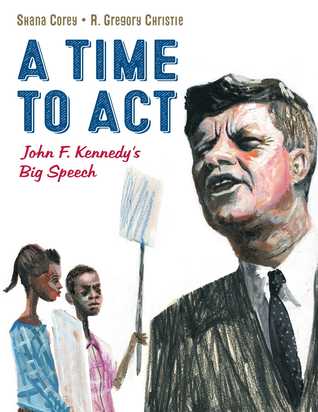Here are some of the most recent books I've read and recommend for my students. They're all available from the public library, but any donations towards getting them into our collection are most welcome! Cover images and descriptions are from Goodreads.
Picture Books
Everything is yellow, red, orange. Everything is chilly, frisky, gusty.
Everything is changing, turning. It’s the middle of Fall.
Can you see it?
Can you taste it?
Can you smell it?
Can you imagine it?
It starts with an ALLIGATOR and a BEAR chasing a CAT. When a DRAGON (and a chicken and an egg!) join in pursuit, things start to get REALLY interesting. A wild and wacky chase through snow and ice, and to jungles and over mountaintops, leads the whole crew to a wonderful realization: They're better off as friends. (NOTE: I think I'll use this for Mock Caldecott and in the future with "Oops! Pounce! Quick! Run!" ... you can borrow last year's Grade 1 version of that book from our library.)
Middle Grade Novels
Magnolia Grace never wanted to leave Georgia. She never wanted to move with her mama to the farm her daddy owned before he died. But now here she is, in a tiny Vermont town where everybody sings the praises of the father Maggie never knew. Then Maggie meets the Parker family—two moms, six kids, plus a pony. The Parkers are loud and wild, ask lots of questions, and don't follow any of the rules Maggie grew up with in Georgia. Suddenly Maggie has questions too.
Nonfiction
Noah Webster - famous for writing the first dictionary of the English language as spoken in the United States - was known in his day for his bold ideas and strong opinions about, well, everything. Spelling. Politics. Laws. You name it, he had something to say about it. He even commented on his own opinions! With a red pencil in hand, Noah often marked up work that he had already published. So when Noah's ghost came across this new picture book biography, he couldn't help but make a few suggestions!

Who was Grace Hopper? A software tester, workplace jester, cherished mentor, ace inventor, avid reader, naval leader—AND rule breaker, chance taker, and troublemaker. Grace Hopper coined the term “computer bug” and taught computers to “speak English,” and throughout her life succeeded in doing what no one had ever done before. Delighting in difficult ideas and in defying expectations, the insatiably curious Hopper truly is “Amazing Grace” . . . and a role model for science- and math-minded girls and boys. (NOTE: We may read this in December as part of Computer Science Week.)

From prominent leaders such as Martin Luther King, Jr. and Jackie Robinson to children and teenagers, it was the people speaking out and working for civil rights through sits-ins, freedom rides, and marches who led John F. Kennedy to take a stand. And with his June 11, 1963, civil rights address, he did.
This is the story of JFK—from his childhood to the events that led to his game-changing speech and the Civil Rights Act of 1964. Corey and Christie offer a deeply human look at our country’s thirty-fifth president, underscoring how each one of us, no matter who we are, have the power to make a difference.
